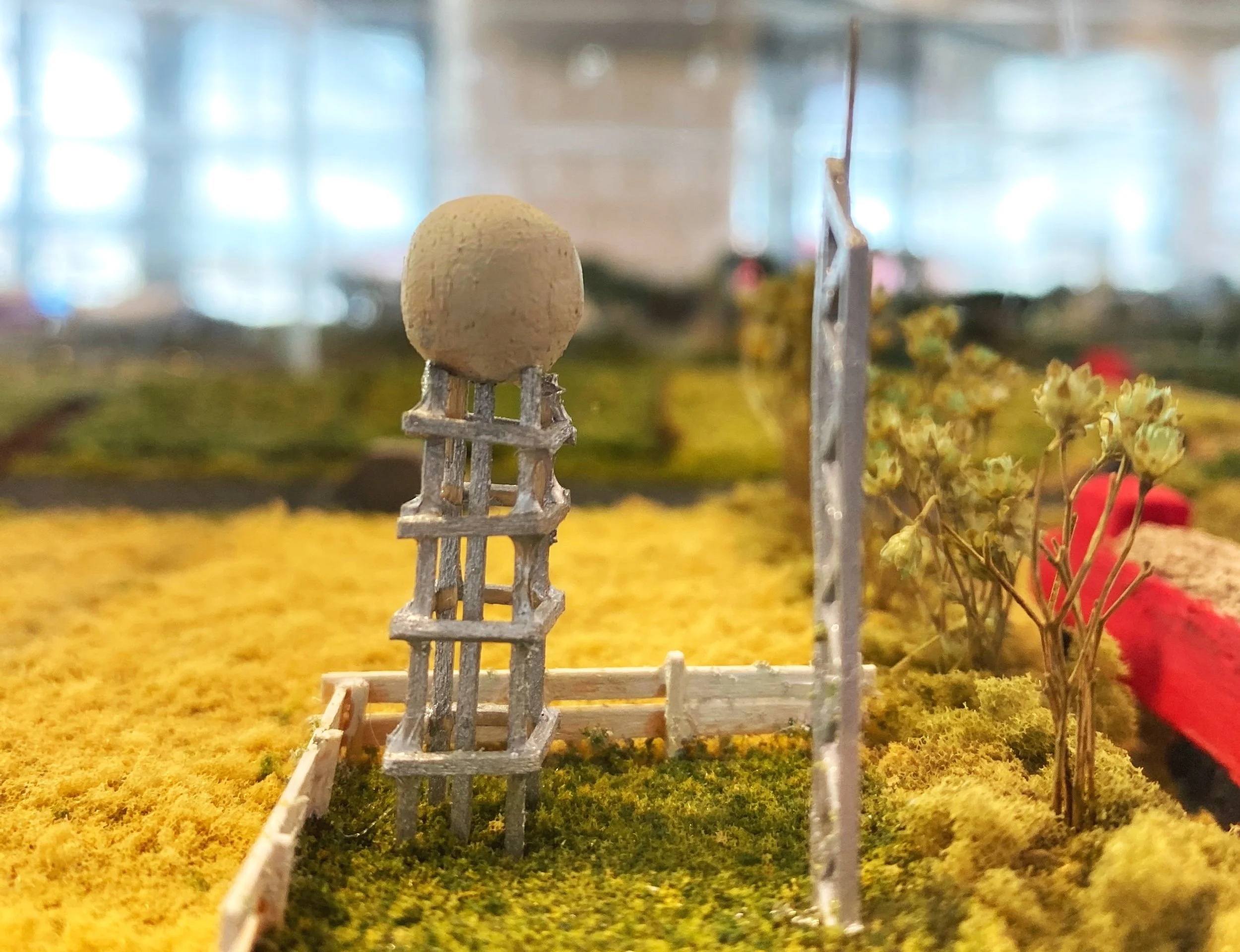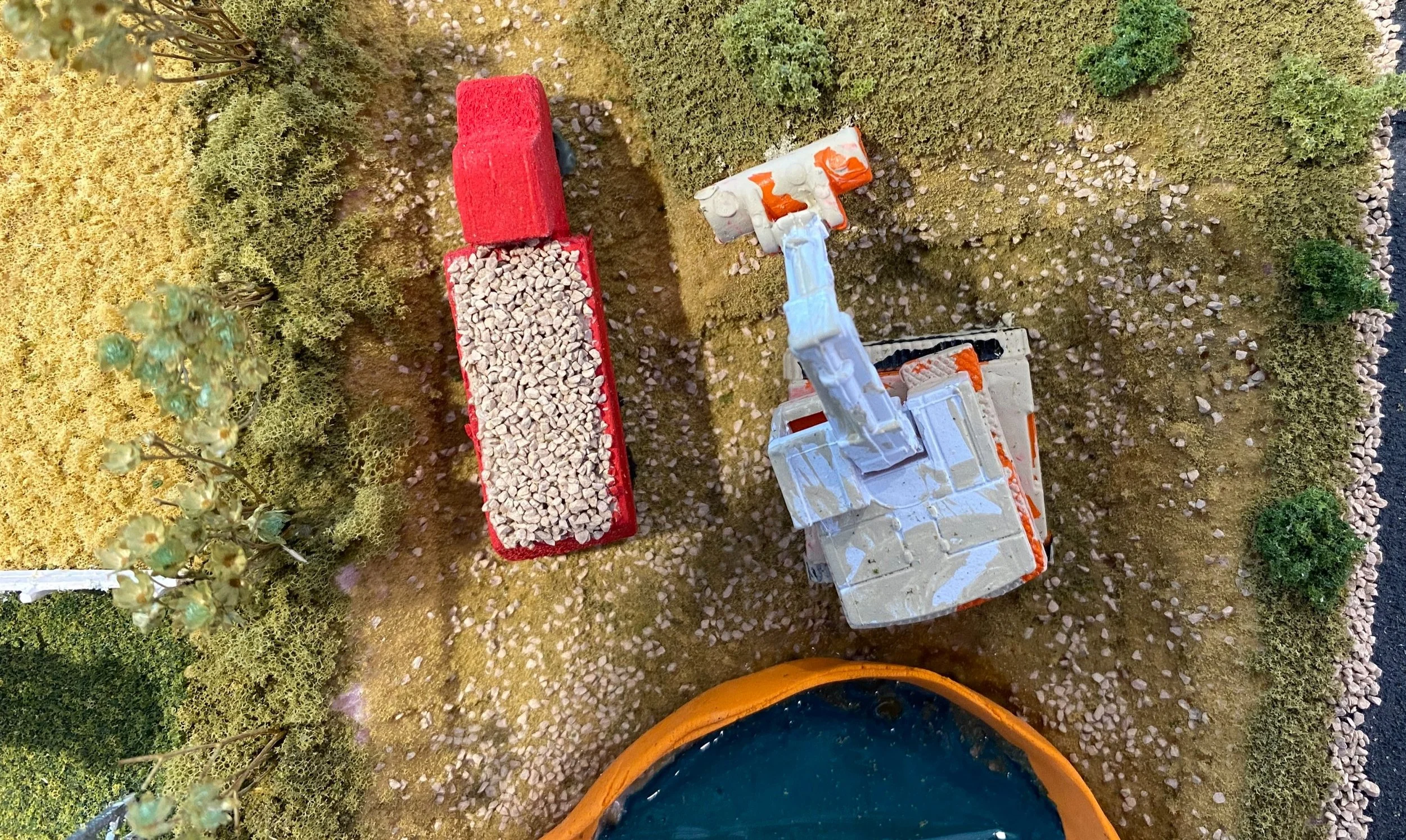Wastewater Treatment Plant
The white tanks in the corner of this neighborhood are part of the wastewater treatment plant. Wastewater from urban areas is transported here by pipeline. Pollutants are removed from the wastewater through physical, chemical, and biological processes before the treated water is released into the river.
Learn more about wastewater treatment from the Environmental Protection Agency (EPA).
Golf Course
There is a golf course on the southeast corner of this neighborhood. Golf courses often use fertilizers to keep their grass green. Phosphates in fertilizer runoff can cause water quality issues such as algae blooms and low dissolved oxygen for fish. This golf course is using low phosphate fertilizers to help reduce its impact on water quality.
Homeowners and lawn care services should also take care to use fertilizers responsibly and only when necessary.
Learn more about how fertilizer impacts water quality from Clear Choices Clean Water Indiana.
Northern Indiana Weather Forecast Office
The large Doppler radar tower is used by the National Weather Service’s Northern Indiana Weather Forecast office. The tower uses a Doppler radar system to detect precipitation. The meteorologists at the Forecast Office use radar data to predict weather and track storms for 37 counties in northern Indiana, southern Michigan, and northwest Ohio.
Tile Drained Field
The farm field with bare ground has recently had drainage tile installed. The lighter colored lines of soil are where the tile lines have been buried. These tiles drain excess water from the field and empty into a drainage ditch. Sometimes tile drainage can cause water quality issues by carrying excess nutrients off the field and into the water. However, tile drainage can also be designed as conservation drainage to benefit both the farm and water quality.
Conservation drainage options include bioreactors that reduce nitrate in the outflowing water, constructed wetlands to filter water, and more
Learn more about conservation drainage from the Natural Resources Conservation Service (NRCS).
Sand and Gravel Mine
Just across the road to the north of the wastewater treatment plant is a sand and gravel mine. This mine is extracting sand and gravel from a geological feature called an esker. An esker is a ridge that is deposited by meltwater flowing underneath a glacier.
An orange silt fence has been installed at the mine to prevent the exposed soil from being eroded into the water. Stormwater pollution prevention practices like silt fences should be used at mines and construction sites to prevent sediment and other contaminants from running off site and polluting our water.
Other stormwater pollution practices for construction sites include designating disposal areas for hazardous and construction waste, inlet controls, washout basins, and more. The Soil and Water Conservation District and Warsaw Stormwater review Stormwater Pollution Prevention Plans (SWPPPs) and consult with developers on preventing stormwater pollution.




